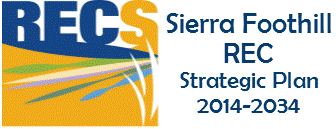Direct and Legacy effects of compost amendments on rangeland ecosystem services
Principal Investigator: Lauren Hallett
Semi-arid rangelands are principally managed for forage, while providing ecosystem services such as plant diversity and soil carbon sequestration. There is growing political support in California to compensate ranchers for managing for soil carbon. Compost amendments to soil have been proposed as a tool to increase soil carbon as well as forage production.
Our preliminary research has indicated that amendments can elevate both services for years to decades following application. Compost amendments contain nitrogen, however, which has been linked to the loss of native and stress-tolerant species. A loss of stress-tolerant species could reduce the resilience of forage production and other ecosystem services to stressful low- resource conditions such as drought. The nitrogen in compost is in a chemical form that is not readily accessible to plants, which may lessen these potential drawbacks, but testing the likelihood and long-term consequences of species loss due to compost amendments is essential to determine the viability of the practice.
As compost amendments become a more common practice in California and throughout the US, it is critical to better understand the nitrogen and water dynamics of compost amendments, and how these feed back on plant community composition, as well as forage production and soil carbon storage.
Our goal is to build this understanding to better inform rangeland management practices.
Our research first tests the effect of management practices for soil carbon on forage and biodiversity across rainfall conditions, and secondly tests whether these processes interact to affect the resilience of ecosystem services over time.
We will do so using a large-scale field experiment in which we cross soil management practices (compost, nitrogen fertilizer, control) with rainfall manipulations (drought via shelters, wet via irrigation, control) and assess the effects on species composition, forage production and soil carbon over time.
This work needs to be conducted at the Sierra Foothills Research and Extension Center for three reasons. First, we have conducted past studies of compost amendments at SFREC, which provides a baseline for our hypotheses and allows us to better develop the manipulations. Second, we will use the rainout shelter infrastructure at SFREC that we built for a previous project, and the expertise of the SFREC staff will be critical for implementing and maintaining the rainfall manipulations. Third, basing this work at SFREC will allow us to better share results with the ranching community through SFREC field days and outreach events.





